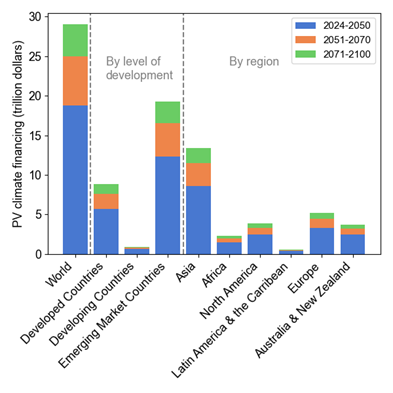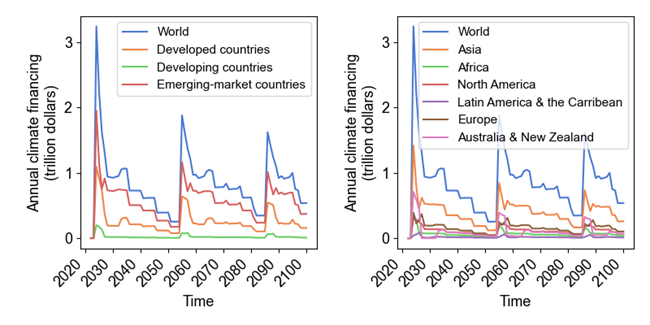|
About the authors
Tobias Adrian is the Financial Counsellor and Director of the IMF’s Monetary and Capital Markets Department. He leads the IMF’s work on financial sector surveillance and capacity building, monetary and macroprudential policies, financial regulation, debt management, and capital markets. Prior to joining the IMF, he was a Senior Vice President of the Federal Reserve Bank of New York, and the Associate Director of the Research and Statistics Group. Mr. Adrian has taught at Princeton University and New York University, and has published in economics and finance journals, including the American Economic Review and the Journal of Finance. His research focuses on the aggregate consequences of capital market developments. He holds a PhD from the Massachusetts Institute of Technology; an MSc from the London School of Economics; a Diplom from Goethe University Frankfurt; and a Maîtrise from Dauphine University Paris.
Patrick Bolton was Professor of Business at Columbia Business School. His career began at University of California at Berkeley, then Harvard University, L’Ecole Polytechnique, LSE, l’Université Libre de Bruxelles, and Princeton University. He is a graduate of University of Cambridge, Institut d’Etudes Politiques de Paris and London School of Economics (PhD). His research and areas of interest are in contract theory and contracting issues in corporate finance and industrial organization. A central focus of his work is on the allocation of control and decision rights to contracting parties when long-term contracts are incomplete. This issue is relevant in many different contracting areas including: the firm’s choice of optimal debt structure, corporate governance and the firm’s optimal ownership structure, vertical integration, and constitution design. His work in industrial organization focuses on antitrust economics and the potential anticompetitive effects of various contracting practices. He recently published his first book, Contract Theory, with Mathias Dewatripont and has co-edited a second book with Howard Rosenthal, Credit Markets for the Poor.
Alissa M. Kleinnijenhuis is a Research Scholar at the Stanford Institute of Economic Policy Research (SIEPR) at Stanford University. She is also a Senior Research Associate at the Institute for New Economic Thinking (INET) at the Oxford Martin School of the University of Oxford. Alissa is a Co-PI of a Market Ecology & Financial Stability Grant, supervising four PhD students, and Co-Founder of the Environmental Stress Testing and Scenarios Program (ESTS), both at the University of Oxford. She taught a novel course at Stanford University in Fall 2021 on Climate Finance. Kleinnijenhuis’ research examines how finance can advance the public good, focusing on how the financial sector can be leveraged as a first-order driver of a climate change solution. In particular, her research in area of climate finance examines how financial incentives can be aligned with limiting climate risks and financing the transition to a carbon-neutral economy. Her research is all about making the triangular sectors of finance – the public, private and academic sector – work for the green transition. Her second area of expertise concerns financial stability, financial crises, financial stress testing, and financial regulation. Her two focal areas of research – climate finance and financial stability – are linked by their emphasis on addressing externalities emerging from climate change and too-big-to-fail financial institutions. Dr. Kleinnijenhuis holds a BS from Utrecht University in Economics and Mathematics (cum laude), a MSc in Mathematics and Finance from the Imperial College London, and a DPhil (PhD) in Mathematical and Computational Finance from the University of Oxford. She was a Postdoctoral Fellow at the MIT Sloan School of Management and the MIT Golub Centre for Finance and Policy (GCFP) at the Massachusetts Institute of Technology. She has been a Visiting Scholar at Yale University and the University of California Santa Barbara, and has conducted research at Morgan Stanley and Allianz Global Investors.
|







